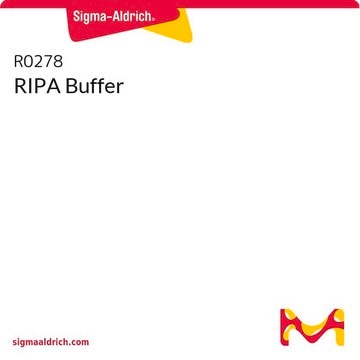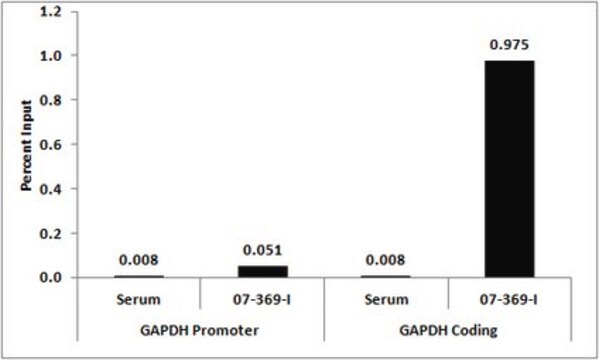05-1339
Anti-Trimethyl Histone H3 (Lys4) Antibody, clone CMA304
clone CMA304, from mouse
Sinónimos:
H3K4me3, Histone H3 (tri methyl K4), H3 histone family, member T, histone 3, H3, histone cluster 3, H3
About This Item
Productos recomendados
origen biológico
mouse
Nivel de calidad
forma del anticuerpo
purified antibody
tipo de anticuerpo
primary antibodies
clon
CMA304, monoclonal
reactividad de especies
human, vertebrates
técnicas
ELISA: suitable
dot blot: suitable
immunocytochemistry: suitable
immunoprecipitation (IP): suitable
multiplexing: suitable
western blot: suitable
isotipo
IgG1κ
Nº de acceso NCBI
Nº de acceso UniProt
Condiciones de envío
wet ice
modificación del objetivo postraduccional
trimethylation (Lys4)
Información sobre el gen
human ... H3C1(8350)
Descripción general
Especificidad
Inmunógeno
Aplicación
This antibody has been shown by an outside laboratory to be suitable for ELISA.1
Immunocytochemistry:
This antibody has been shown by an outside laboratory to be suitable for immunocytochemistry.1
Immunoprecipitation:
This antibody has been shown by an outside laboratory to be suitable for immunoprecipitation.1
Multiplexing:
This antibody specifically recognizes histone H3 trimethylated on Lys4 by Luminex® assay.
Epigenetics & Nuclear Function
Histones
Calidad
0.5 - 2 μg/mL (1:500-2000) dilution of this antibody detected trimethyl Histone H3 (Lys4) on 10 μg of HeLa acid extract.
Descripción de destino
Ligadura / enlace
Forma física
Almacenamiento y estabilidad
Nota de análisis
HeLa Acid extract lysate
Otras notas
Información legal
Cláusula de descargo de responsabilidad
¿No encuentra el producto adecuado?
Pruebe nuestro Herramienta de selección de productos.
Opcional
Código de clase de almacenamiento
10 - Combustible liquids
Clase de riesgo para el agua (WGK)
WGK 2
Punto de inflamabilidad (°F)
Not applicable
Punto de inflamabilidad (°C)
Not applicable
Certificados de análisis (COA)
Busque Certificados de análisis (COA) introduciendo el número de lote del producto. Los números de lote se encuentran en la etiqueta del producto después de las palabras «Lot» o «Batch»
¿Ya tiene este producto?
Encuentre la documentación para los productos que ha comprado recientemente en la Biblioteca de documentos.
Active Filters
Nuestro equipo de científicos tiene experiencia en todas las áreas de investigación: Ciencias de la vida, Ciencia de los materiales, Síntesis química, Cromatografía, Analítica y muchas otras.
Póngase en contacto con el Servicio técnico








